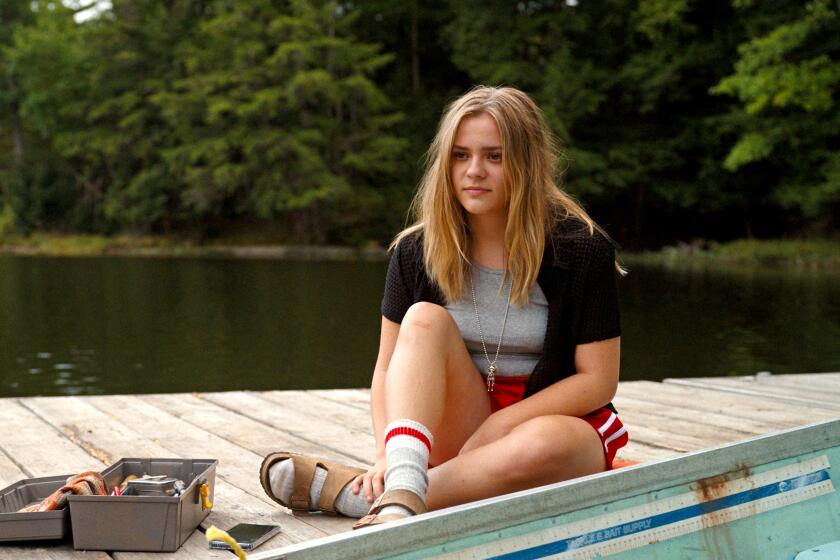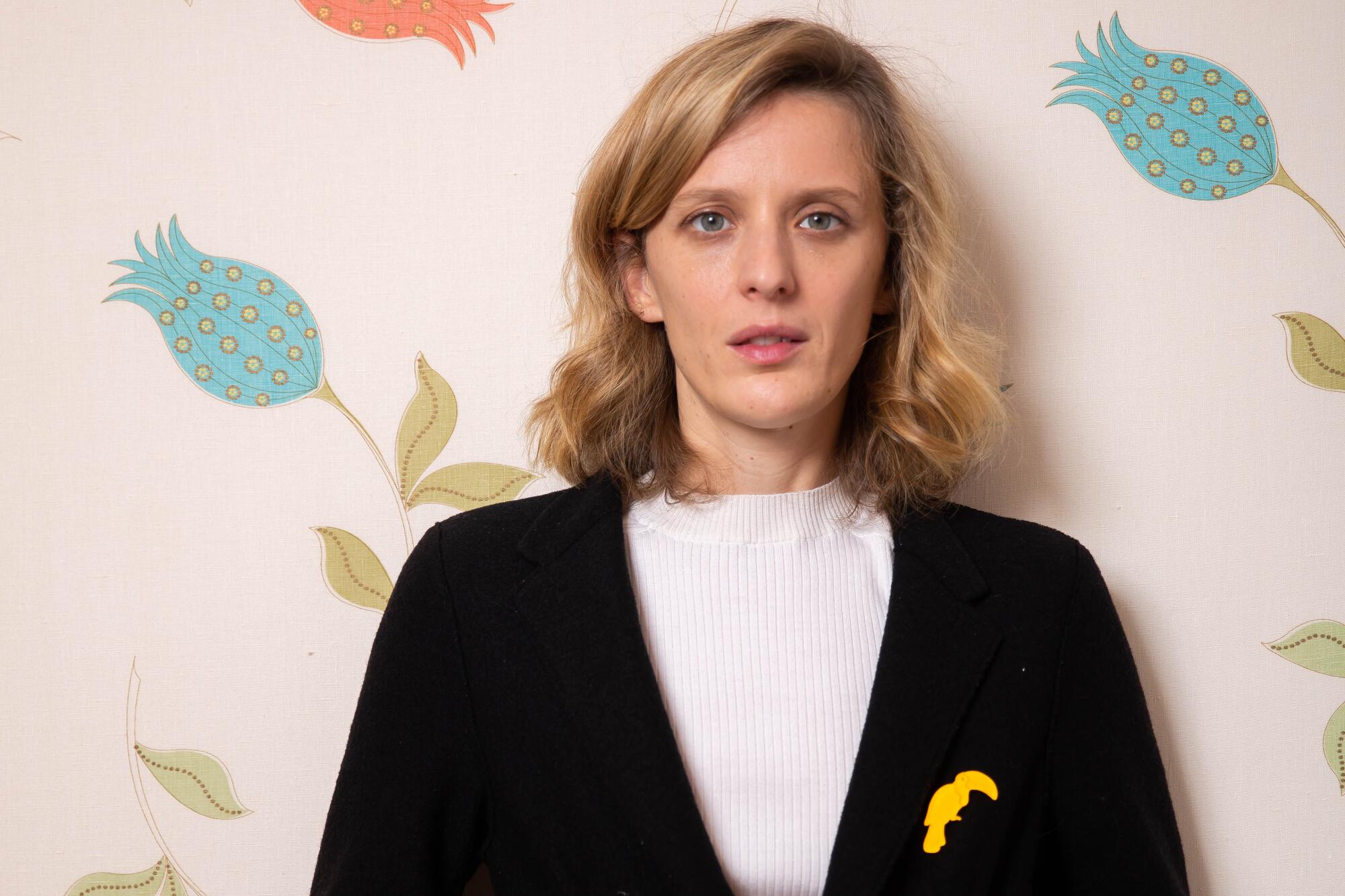
With films full of lacerating emotional insights told with a gentle grace, French writer-director Mia Hansen-Løve has emerged as one of the most reliably acclaimed figures on the world’s festival circuit. Her new “Bergman Island” is positioned to broaden that appeal even further.
Now playing in theaters and adding a video on demand release Friday, the Cannes Film Festival selection marks Hansen-Løve’s English-language debut and stars an international cast of recognizable faces. The film also boldly engages with the legacy of Swedish filmmaker Ingmar Bergman, who has been a touchstone for generations.
As the film opens, a couple — Chris (Vicky Krieps) and Tony (Tim Roth) — arrive on the Swedish island of Fårö, where Bergman lived, created many of his landmark films and is buried. Both filmmakers themselves, Tony and Chris each hope to get some writing done amid the idyllic and inspirational setting, even as their relationship seems quietly strained.
As Chris struggles with her script, she begins to describe it to Tony and it’s also depicted on screen as the story of a woman named Amy (Mia Wasikowska) who rekindles an affair with an old flame, Joseph (Anders Danielsen Lie), when they both attend a friend’s wedding on Fårö.
The film’s crucial final section finds Chris shooting the movie she described to Tony, with Wasikowska and Lie appearing as themselves — she uses her natural Australian accent and he is referred to as “Anders.” That sense of what’s real and what’s imaginary takes further flight into something that playfully and elegantly toys with viewers’ expectations and desire for explanations, perhaps even turning a bit mystical as the film refuses to give direct answers.
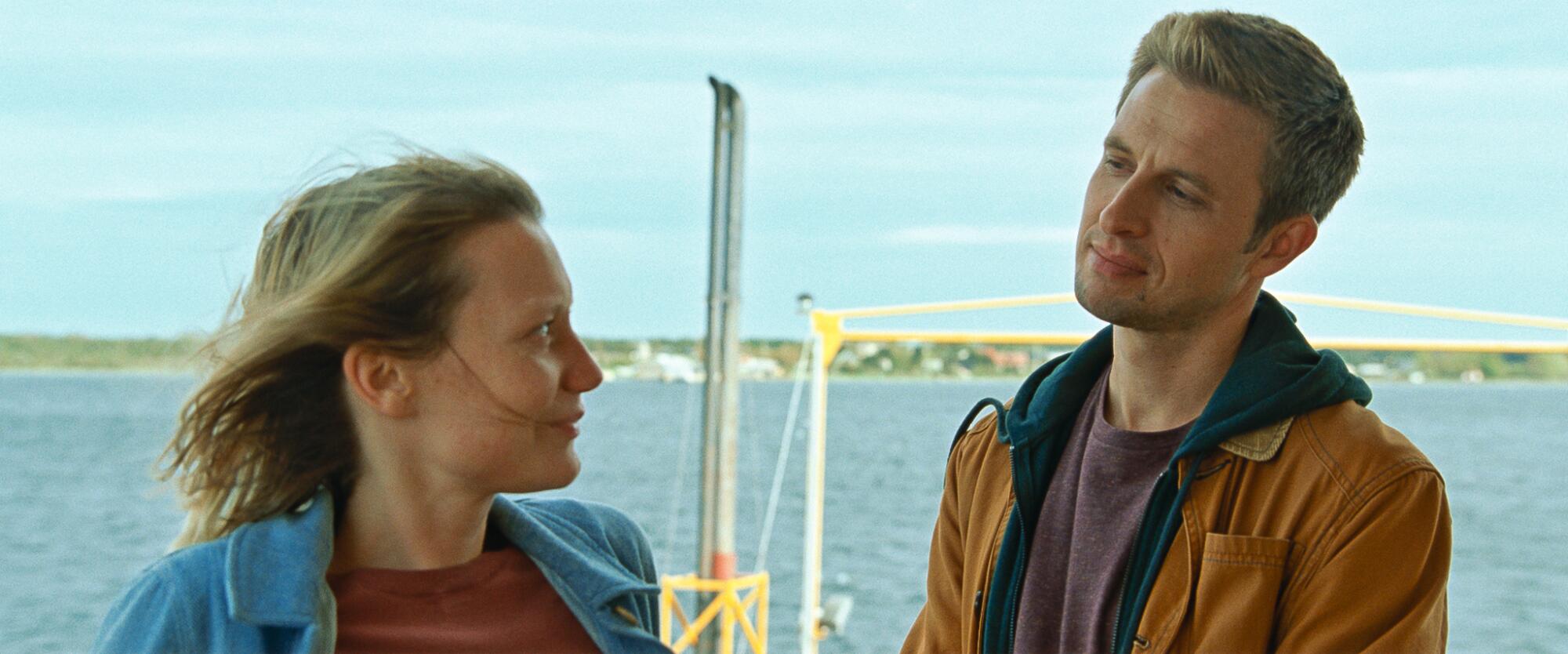
Hansen-Løve’s films have long drawn from her life in some way, from a transformative early romance in 2011’s “Goodbye First Love” to her brother’s career as a club DJ in 2014’s “Eden.” She visited Fårö multiple times over a number of years and wrote the “Bergman Island” script there. She was also in a long-term relationship with French filmmaker Olivier Assayas, including having a child together, so it is natural for audiences to assume that the relationship troubles on screen in some way represent their real-life breakup.
“My film deals with that confusion between fiction and reality,” said Hansen-Løve during a recent video interview the day after her film played the New York Film Festival. “The way I see it, I’m trying to be completely truthful about it, but it’s always a reinterpretation and the form that it takes isn’t necessarily faithful to the facts of my life. I think the truth is even deeper. To give you an example, I never went to Fårö with Olivier Assayas and it’s very surprising because he’s a huge fan of Bergman. When I went to Fårö, I was alone and I wrote the film on my own.
“And so none of the scenes you can see on the island between Tony and Chris happened to me, the way they happen in the film,” said Hansen-Løve. “They are all reinterpretation, reinvention. But were they inspired or was I trying to deal with things I had been going through? Yes, certainly. My pleasure as a director is really to transform this experience of mine into a fiction in a way that ultimately it’s not my life anymore. It becomes something else. And hopefully something bigger and more universal than my life.”
Like Hansen-Løve, the character of Chris hates to fly, which is why she behaves so anxiously as she and Tony arrive in Sweden. And, like her creator, Chris finds writing to be an excruciating process that brings out all of her insecurities and vulnerabilities.
“I think I really expressed what the writing process is for me [in ‘Bergman Island’], but the funny thing is that the only time where it wasn’t like this was when I wrote on Fårö, when I wrote that film,” Hansen-Løve said. “And that’s really weird because when I wrote precisely the film where I describe how difficult writing is for me, it was the easiest film for me to write. I think it had to do with the moment of my life, I’m sure, but also with the island and the magic of it. I really believe that the island opened doors for me that could never be opened before.”
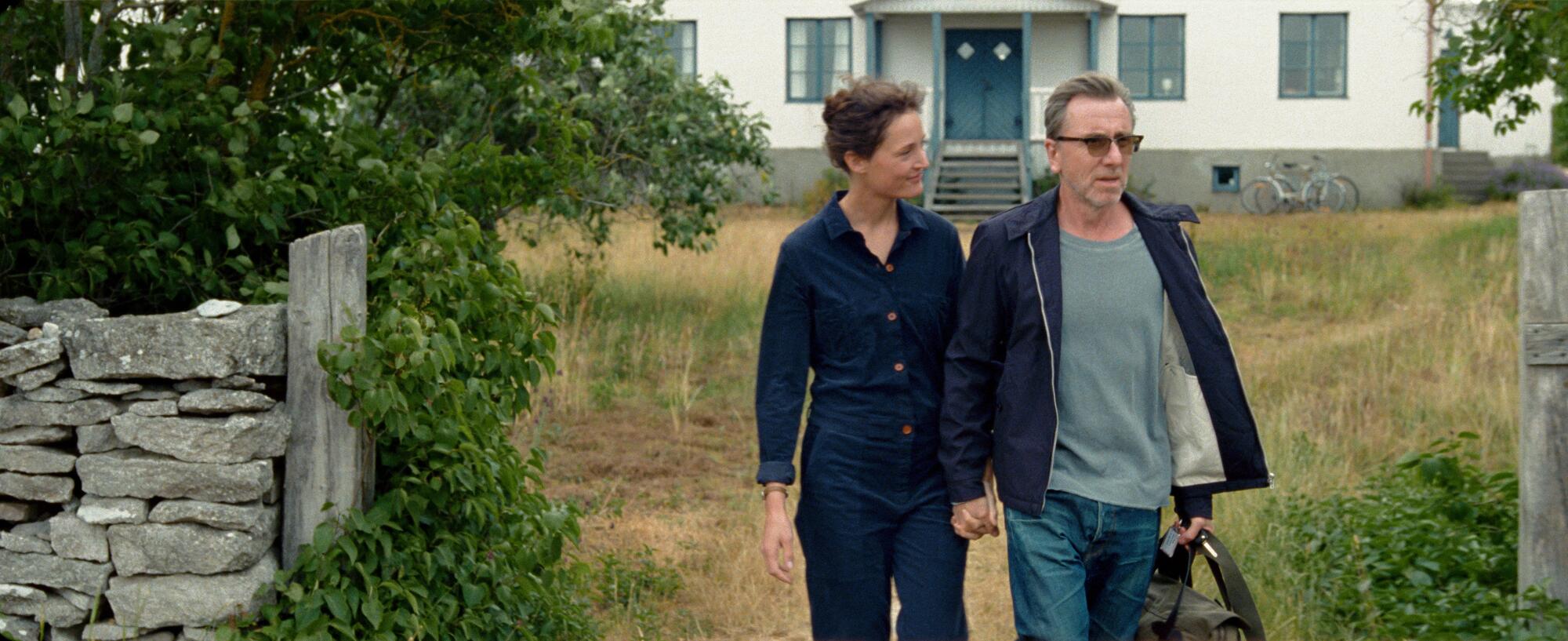
To be able to shoot on that fabled island was no easy feat. The film was originally set to go into production in the summer of 2018, with Greta Gerwig as Chris and John Turturro as Tony. When Gerwig, who had a small role in Hansen-Løve’s “Eden,” had to drop out to direct her adaptation of “Little Women” shortly before shooting was to start, the production was left scrambling. (Turturro also fell out from the film at the same time.)
Having recently seen Vicky Krieps in Paul Thomas Anderson’s “Phantom Thread,” Hansen-Løve reached out to the Berlin-based, Luxembourg-born actress to see if she was interested in stepping into the part. Hansen-Løve and producer Charles Gillibert devised a plan to shoot the scenes with Wasikowsa and Danielsen-Lie, as well as whatever they could with Krieps, without actually casting the part of Tony.
Once Roth was eventually cast, those scenes were shot a full year later in 2019 to capture the same season on the island. The film was finished in time to premiere at the 2020 Cannes Film Festival, but the pandemic delayed the premiere until Cannes 2021.
In a recent interview from Paris, Gillibert reflected on the unconventional production break. “To be honest, I’m not sure it was that rational,” he said. “After all this work that Mia had started by going on the island, writing there, putting every piece together, with a great crew and it was pretty difficult to finance, I just didn’t want to break that dynamic. And as the movie is truly cut in two parts, we had the possibility maybe to shoot this first part with the two actors we had there.”
On bringing Krieps onto the project on very short notice, he said, “You have to meet somebody at the moment where everything is fast and very difficult to trust somebody. How do people trust each other in the craziest moment? But it was about keeping the energy and the dynamics.”
Without much time to prepare, Krieps leapt into the project and the challenge of shooting scenes in which she was meant to be alone and reflecting on a relationship with a husband who had not yet been cast. She felt an immediate bond with Hansen-Løve, and a mutual understanding of the emotional and logistical difficulties of being a working mother.
“I could feel this connection between the two of us,” said Krieps, also while recently in New York, “sharing the same sensibility to life — being a mother, trying to also be an artist, which is very difficult to be a mother and to work and do your own thing.
“Many problems arise from this. In order to make a movie, we know what it takes beforehand to get out of the way that we can even just work,” Krieps said. “So this is something we were sharing and we never had to talk about. It was really after making the movie that I amused myself and I started asking questions and saying, ‘Is this how it was in your life?’”
Wasikowska referred to her portrayal of Amy — the imagined stand-in for Chris, who is in turn an imagined stand-in for Hansen-Løve — as “an abstraction of an abstraction, an abstraction of Mia.”
In a movie that deals with the slippery nature of identity and just a hint of persona-swapping, simply having two people on set named Mia also added something extra.
“There was definitely a time when someone called her name, we both responded, but it was fine,” said Wasikowska during a recent interview from Sydney, Australia. “It was a bit imitating the film to be honest. And there was a lot of that going on. That’s kind of why I loved her script and what I love about Mia’s films, because she’s quite honest about those crossovers, and you’re surrounded by those themes ... and you become a bit more aware of them. It was pretty funny.”
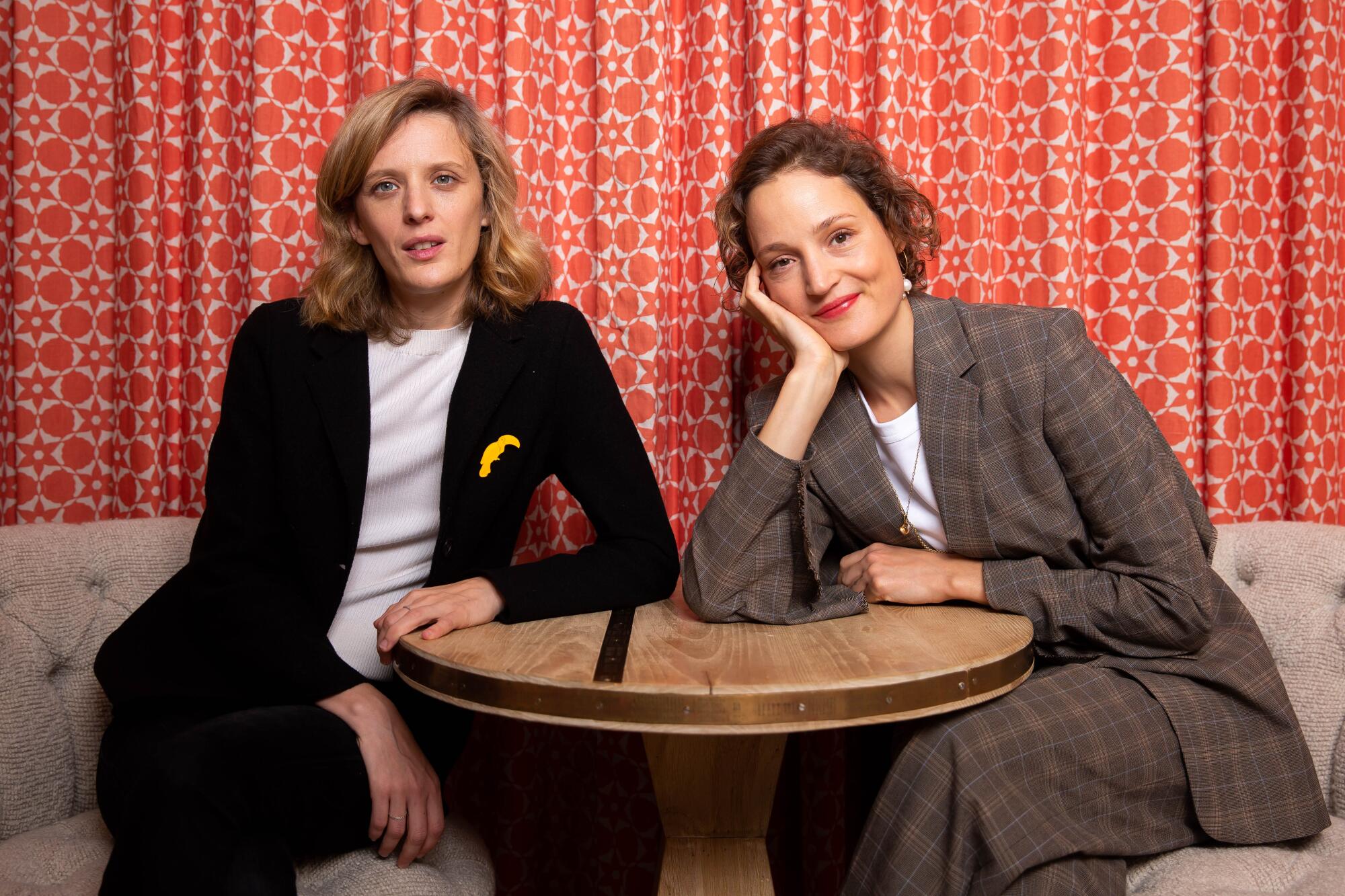
Despite its unusual scheduling, the shoot itself had a more blissed-out feeling. Krieps noted that the French crew had a very specific system worked out to ensure there was always enough wine shipped in. Wasikowska recalled the ease of moving from location to location, often just riding the bicycle her character used.
“Not to make it a gendered thing, but I’ve not done as many films with female directors as I have with male directors, and she just sets such an amazing atmosphere on set,” said Wasikowska. “It was very calm. She’s also extremely specific and sometimes when people are very specific, it kind of makes things quite rigid and uncompromising and stressful and anxious, but she was able to be all those things, specific and uncompromising in her vision, but still have just the most relaxed crew. It was just such a pleasant shoot.”
In one scene, Chris and Tony have dinner with representatives from the Bergman Center and Chris asks about Bergman’s personal life. He had nine children by six different women and was said to not be very involved with any of the children’s lives. She wonders if this would be possible for a woman, to ignore her family in favor of her art, asking “Do you think you can create a great body of work and raise a family at the same time?”
Hansen-Løve said that the shooting of this scene inspired a similar, and somewhat contentious, conversation among her crew, with many men unable to even understand the question.
“I would say these are questions I ask myself all the time. And I think until now only women have thought these questions were actually interesting,” she said. “I mean, who’s the male director in the history of cinema who asked himself these questions in a film before, like, ‘Can I be a good father and a great artist?’ It’s not even a question for men. And I realized after years of making films — and I’m not even saying it in an ideological, militant perspective — but really, truly, honestly only women asked themselves these kind of questions.”
Noting that she finds pursuing her art “essential,” Hansen-Løve adds, “I’m a mother and I love my kids and I want to raise them properly. I don’t want to abandon them like Bergman did. And I still am a great admirer of Bergman. It doesn’t change anything to my love for Bergman. But I’m different ... I couldn’t make nine kids, physically I couldn’t. So I think it’s worth asking yourself this question because no one did before. And I’m not giving any answer. Maybe the film is the answer.”
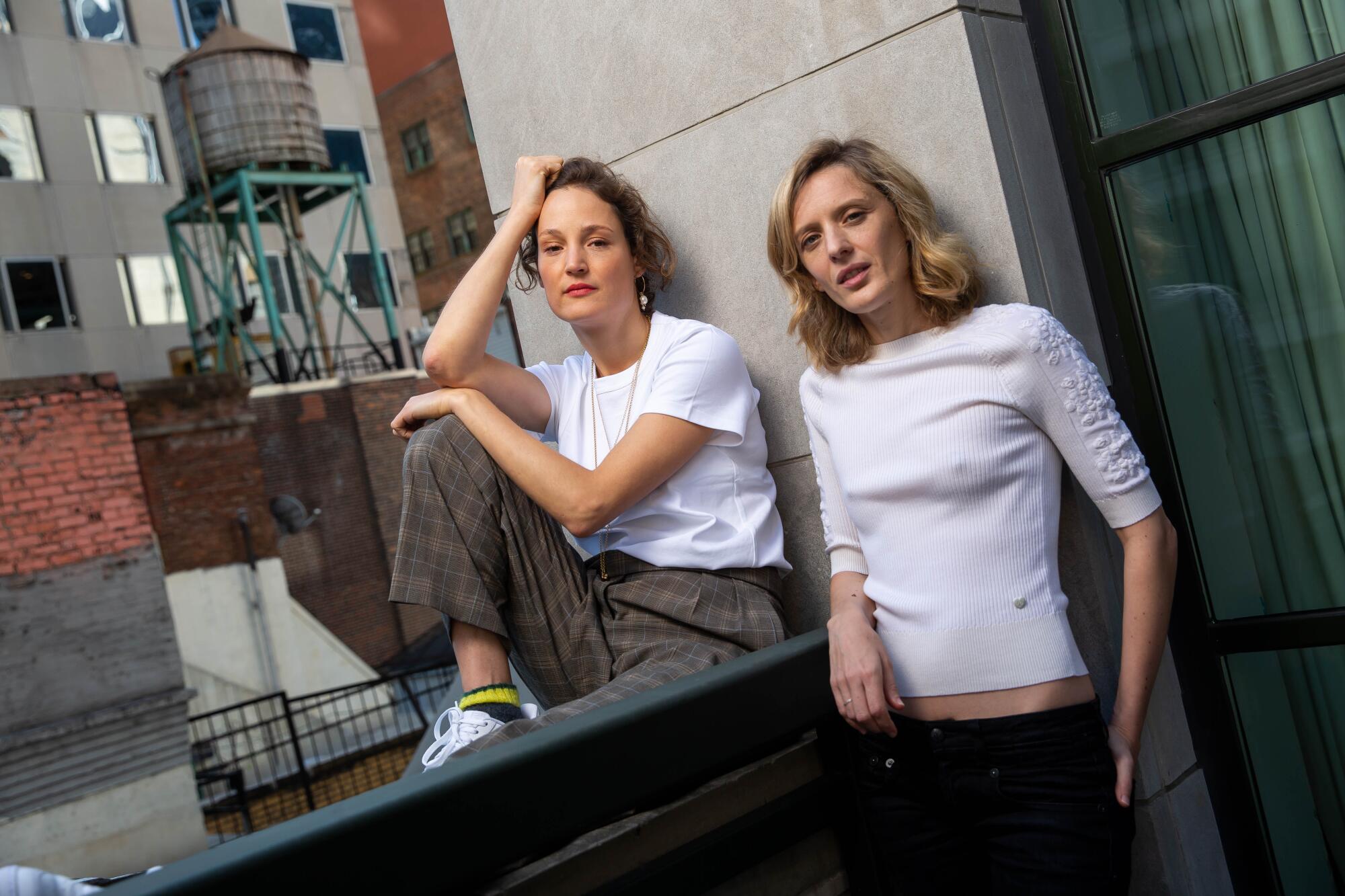
During the time she has been waiting for “Bergman Island” to come out, Hansen-Løve had a second child, a son, with filmmaker Laurent Perreau — “This long COVID times has given us a lot of time to do many things, including making kids,” she said — and has also been working on a new film, the Paris-set “One Fine Morning,” starring Léa Seydoux.
Having set a story amid a place she has come to hold so dear, Hansen-Løve is pleasantly surprised that making the film hasn’t ruined it for her.
“Most of the time when you make a film somewhere and you spend a lot of time in a specific place, you don’t want to go back there afterward,” she said. “But to me, the magic of Fårö was even stronger than that. Even after the film was finished and I couldn’t go back there because of COVID, traveling was impossible, but I want to go back. I’m planning if I can to go back next year and write and spend some time there. The magic stayed with me even after the film.”
More to Read
Only good movies
Get the Indie Focus newsletter, Mark Olsen's weekly guide to the world of cinema.
You may occasionally receive promotional content from the Los Angeles Times.










